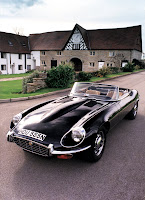VALENCIA, Spain : January 31, 2010 - The Renault F1 Team took the covers off its 2010 challenger, the R30, today in front of assembled media at the Valencia circuit in Spain.
Renault F1 Team driver Robert Kubica was on hand to unveil the car and reveal the exciting new black and yellow livery - the iconic colours made famous by Renault in the 1980s.
The team also presented Vitaly Petrov as Robert's teammate for the 2010 season. The 25-year-old finished as runner-up in the GP2 Series last year and becomes the first Russian driver to race in Formula One.
After unveiling the R30, Team Principal, Eric Boullier, joined Robert and Vitaly for a photo call in front of the car, along with the team's Third Driver, Ho-Pin Tung, and Reserve Driver, Jérôme d'Ambrosio. Czech driver Jan Charouz will also be a Reserve Driver for the team this year but was unable to attend the presentation.
With stable aero regulations the R30 is a mixture of evolution and revolution, and is much more svelte and attractive than its predecessor. In particular the rear of the car has been considerably reworked to allow the car to make the most of the 'double-decker' diffusers that were first seen last year. Changes have also been made to the architecture of the chassis to adapt to the refuelling ban, which has required the installation of a much larger fuel tank.
Speaking at the presentation, Eric Boullier praised the team's efforts in delivering the new car in time for the first test: "We've been working flat-out during the winter to ensure that we begin the new season in the best shape possible. The R30 should be a competitive, strong and reliable car, and we've opted for an aggressive development strategy throughout the season. Now we're here ready for the first test and we're all excited to see if the car performs as we think it will."
Both Robert and Vitaly were thrilled to see their new car and spoke of their hopes for the season ahead: "The team has been working on the new car for a long time and it's clear that we are moving in the right direction," said Robert. "Now we need to maximise the winter tests to keep up this momentum and continue improving the car. Our priority is to make the car easy to drive because the new rules favour cars that are not too sensitive - we need a car that behaves consistently in a wide range of conditions."
Vitaly Petrov added: "The new car looks stunning and the colours remind everybody of Renault's great history in the sport. I can't wait to drive the car for the first time and start working with the team."
The Renault F1 Team will remain in Valencia until Wednesday evening to complete the first preseason test session.
Renault F1 R30 Technical Specifications
Renault F1 RS27-2010 Engine :
- Capacity : 2400 cc
- Architecture : 90° V8
- Weight : 95 kg
- Max rpm : 18,000 rpm
- ECU : MES SECU
- Fuel : TOTAL
- Oil : Elf (a brand of TOTAL)
- Battery : Renault F1 Team
- Moulded carbon fibre and aluminium honeycomb composite monocoque, manufactured by the Renault F1 Team and designed for maximum strength with minimum weight. RS27-2010 V8 engine installed as a fully-stressed member.
- Carbon fibre top and bottom wishbones operate an inboard rocker via a pushrod system. This is connected to a torsion bar and damper units which are mounted inside the front of the monocoque.
- Aluminium uprights and OZ machined magnesium wheels.
- Carbon fibre top and bottom wishbones with pushrod operated torsion bars and transverse-mounted damper units mounted in the top of the gearbox casing. Aluminium uprights and OZ machined magnesium wheels.
- Seven-speed semi-automatic titanium gearbox with reverse gear. "Quickshift" system in operation to maximise speed of gearshifts.
- Kevlar-reinforced rubber fuel cell by ATL.
- Separate oil and water radiators located in the car's sidepods and cooled using airflow from the car's forward motion.
- MES-Microsoft Standard Electronic Control Unit.
- Carbon discs and pads (Hitco); calipers and mastercylinders by AP Racing.
- Removable driver's seat made of anatomically formed carbon composite, with six-point harness seat belt by OMP Racing. Steering wheel integrates gear change and clutch paddles, front flap adjuster.
- Front track : 1,450 mm
- Rear track : 1,400 mm
- Overall length : 5,050 mm
- Overall height : 950 mm
- Overall width : 1,800 mm
- Overall weight : 620 kg, with driver, cameras and ballast
Video : 2010 Renault F1 R30
Images : 2010 Renault F1 R30 launched!
[Source : RENAULT]




































































